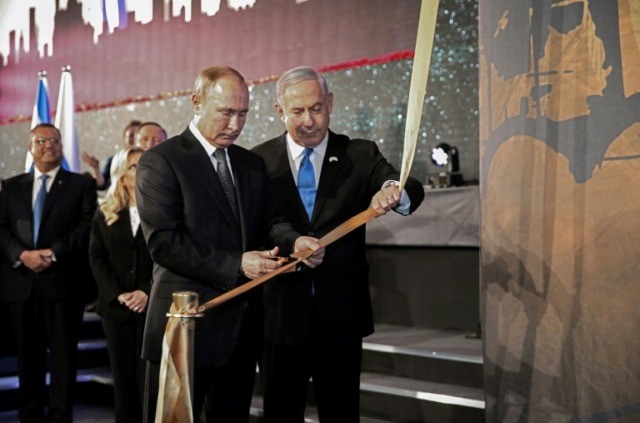Jerusalem (AFP) – Russian President Vladimir Putin inaugurated Thursday a bronze monument in the heart of Jerusalem commemorating the citizens and defenders of Leningrad during the Nazi siege of the city.
Putin, one of dozens of world leaders in Jerusalem to mark the 75th anniversary of the liberation of Auschwitz, insisted that Russians as well as Jews were victims of World War II.
“The blockade (of Leningrad) and the Holocaust are things that can’t be compared to anything else,” he said in remarks translated into Hebrew from Russian at the ceremony.
Putin, whose brother died in the siege, thanked Israel for the “significance” it is paying to the history of the war.
The monument, named “Memorial Candle”, is a narrow square column rising over eight metres, twisting in its middle with small figures cut into it illuminated by an internal light.
Speaking ahead of Putin, Netanyahu, an architect by training, praised the design of the monument, which he said contained “a lot of emotion, a lot of talent, a lot of soul.”
Netanyahu noted the “huge” sacrifice of the 27 million Soviet civilians and soldiers who died during the war against the Nazis, including “nearly a million” who perished in the Leningrad seige and battles.
“We can’t, not even for one moment, blur the sacrifice and contribution of the former Soviet Union — its people, its soldiers in the Red Army — in eradicating the Nazi monster and saving the world from terrible tragedy,” the Israeli premier said.
The new monument, initiated by Soviet-born former member of the Israeli parliament Leonid Litinetsky, was designed, funded and produced by Israelis and Russians, with Israeli sculptor Adam (Peretz) Steel charged with putting everything together.
As part of his work on the project, Steel visited the Leningrad memorial which opened his eyes to the volume and tragedy of the siege.
“Even though I had learnt and read about the project, what I experienced there was something totally different, I realised I was dealing with something on a scale I couldn’t comprehend yet,” he told AFP.
To convey some of the “power and experience” he was exposed to at the Leningrad memorial, Steel decided to make the monument “monolithic” and use sand from the southern Israeli Negev desert in the casting process to give his statue subtle depth.
“You can see the texture, the crevices — it gives it something beyond the design, it puts the person into a very primal place,” he said.
Nazi forces imposed a military blockade on Leningrad beginning on September 1941, with the Red Army managing to lift it nearly 900 days later in January 1944.
Over 600,000 people starved to death during the seige, including tens of thousands of Jewish residents, some of whom were also part of the Soviet military.
Israel’s Russian-speaking citizens from former Soviet Union states make up some 12 percent of the country’s nearly nine-million-strong population.

COMMENTS
Please let us know if you're having issues with commenting.